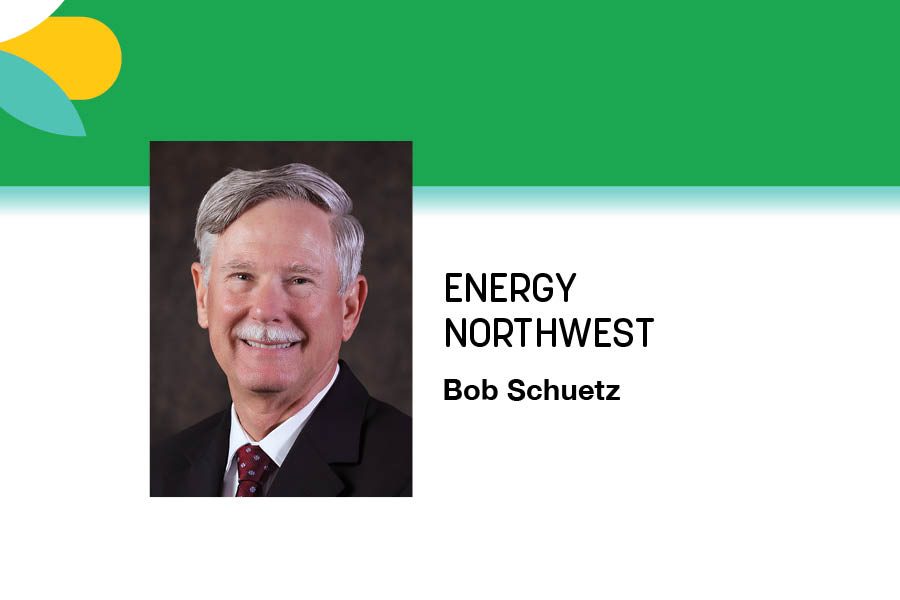Reliable power must come from reliable resources

By Bob Schuetz
Our energy landscape is undergoing significant transformation driven by two important factors.
First, the genuine desire to transition toward a sustainable and clean energy future for the well-being of our generations to come. Second, beyond the imperative for new clean energy, there is an ever-growing demand for new energy of any kind, particularly in Washington.
The widespread expansion of digital data centers, the energy-intensive nature of crypto mining, the growth of our manufacturing sector and an increasing population all contribute to a rising demand for electricity. The Association of Washington Business anticipates the addition of 1 million new Washingtonians over the course of this decade.
As the energy industry addresses these factors, there’s a fundamental truth so engrained that we don’t think about it every day. Energy, specifically electrical energy (electricity), is more than just a convenience, it is more than just quality of life, it is life itself. We rely on electricity to a very large extent to ensure we have fresh water to drink, refrigeration to keep our food safe, heating and cooling in our homes, lighting to see and be productive 24 hours a day, and for safe hospitals to care for our sick and infirm. Electricity forever changed the world, and as humans, we’re not going to part with it if it means we must let go of every innovation that’s improved our lives.
Balancing act
And so, as we manage the transition to a clean energy future, we have to mindfully balance those factors so that we don’t inadvertently take that life-giving power away by changing the electric grid so that it cannot serve our citizens when the system is stressed, such as by severe weather. While public support for a shift to a carbon-free economy is widespread, this support will quickly erode if we start experiencing life disruptions, like a power outage during the heat of summer. If we’re coming home and the lights don’t turn on due to power blackouts, or the electricity bill doubles, support for clean energy transition will evaporate.
The solution we often hear to solve all our clean energy needs is to replace all the carbon-emitting power generation with renewables. Renewables are important, but there are some holes in that plan, and here’s why.
Hydro, solar, wind
In Washington, we are blessed with the expansive and reliable Federal Columbia River Power system hydropower dams. While hydropower is not actually renewable, because water is a fixed resource, it is firm, available 24/7 and clean. We must protect this firm, clean energy source.
When it comes to solar power, only a fraction of Washington’s electricity comes from the sun. States that have built out large-scale solar installations have complained about the overbuild that’s necessary to make it viable. To replace a megawatt of carbon-emitting power generation with solar, which has an effective load carrying capacity of less than 10%, you have to essentially build 10 times the solar to equal the firm power source you are replacing. The other issue is that solar production peaks around noon every day, while the demand for electricity peaks between 4 and 9 p.m. So not only does it require an enormous amount of land to overbuild, but the excess energy must be stored until it is needed, typically with expensive batteries. The cost of storage is often not factored into the cost of solar installation.
We’ve got quite a bit of wind generation in Washington. Wind power is like solar in its intermittent availability. It’s highly variable. On the Bonneville Power Administration’s grid system there might be 3,000 MW of wind generation on Monday and Tuesday, and then zero on Wednesday and Thursday. Wind has a slightly higher capacity than solar, at about 12%, but has the same energy storage issue. The current state of battery storage technology is the capacity to store energy for hours, but with wind we must be prepared to store it for days. Imagine a weeklong cold snap where everyone’s running their heat – and then the wind is gone. When it is very cold or very hot, unfortunately that’s when the wind does not blow. Our peak wind output is in the spring and fall when demand for heating or cooling our homes is much lower.
Renewables do play a role in achieving a carbon-free future, but we must be prepared for power disruption if we only build renewables. To have reliable 24/7 power, we need to have more firm, reliable sources. The two best options are nuclear energy and hydropower. Nuclear energy provides 24/7 power, with an average capacity of 93%. It doesn’t need much land and steadily produces millions of megawatts every year.
At Energy Northwest, we operate a 100% carbon-free generating portfolio that includes wind, solar, hydro and nuclear, plus battery storage. We’re working with our 28-member public utility districts and municipal utilities to expand our renewable assets and bring additional firm, clean nuclear energy to our state. Our commitment is to lead the drive for more clean energy so that we aren’t left in the dark.
Bob Schuetz is Energy Northwest’s chief executive officer.Related Articles





